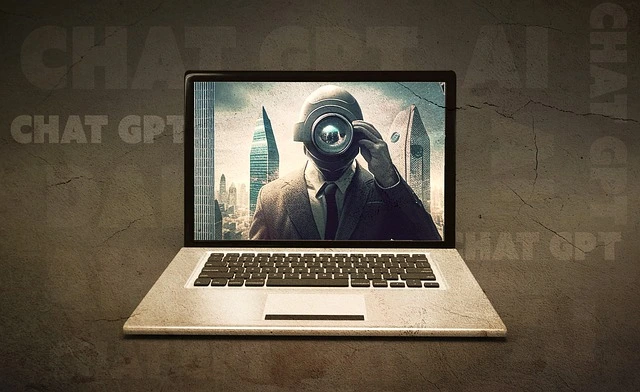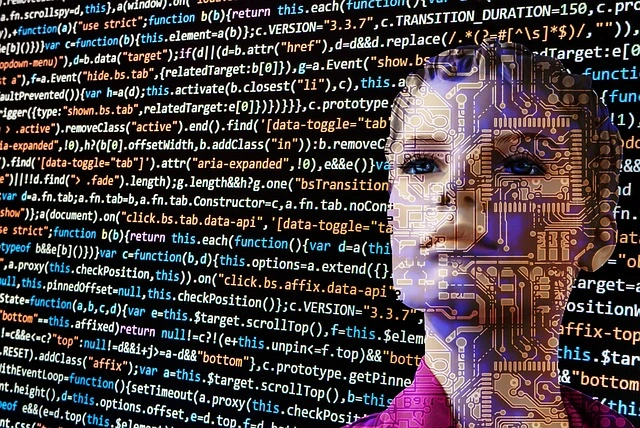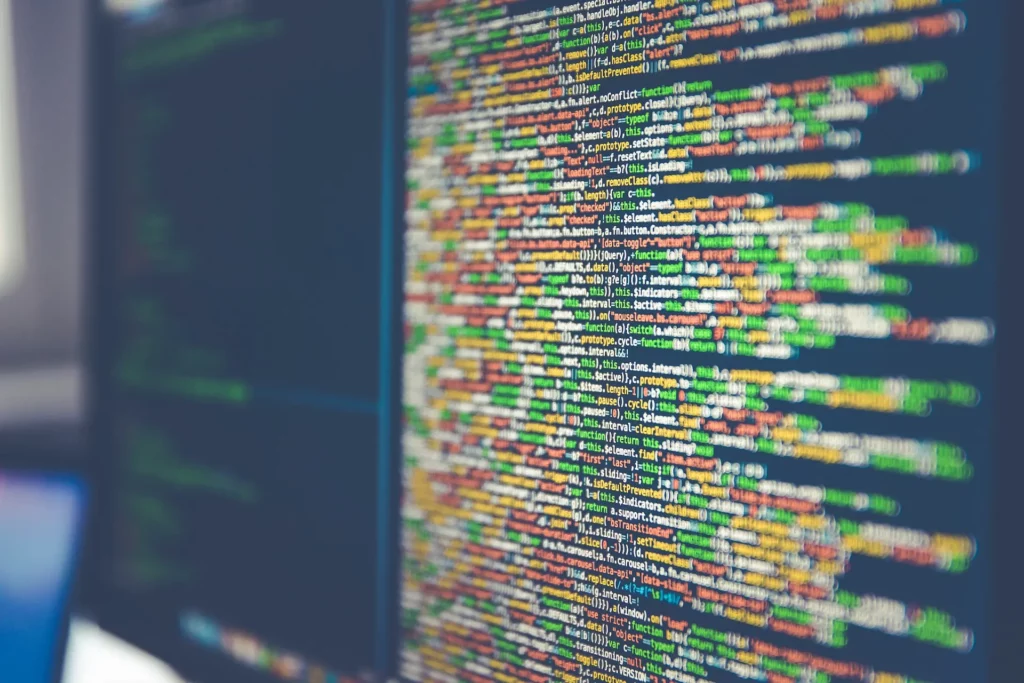Chatbots have become an essential part of modern businesses, providing 24/7 customer service and increasing efficiency by automating repetitive tasks. They are being used by companies in various industries, from e-commerce to healthcare, to improve customer experience and streamline operations.
In this guide, you will learn how to build a chatbot using ChatGPT, step by step. We will cover everything from setting up ChatGPT to deploying your chatbot, using only free resources. Whether you are a beginner or an experienced developer, this guide will provide you with the information you need to create your own chatbot using ChatGPT.

Table of Contents
Setting up ChatGPT
Prerequisites for building a Chatbot with ChatGPT
1. A basic understanding of programming and chatbot development
To build a chatbot using ChatGPT, it is important to have a basic understanding of programming concepts and chatbot development. This includes the understanding of:
- Programming languages
A basic understanding of programming languages such as Python or JavaScript is necessary to integrate ChatGPT with your chatbot. You can check this posts from dataquest and learn Python.
- Chatbot development
A basic understanding of chatbot development, including how chatbots work, the various components involved, and the different types of chatbots (e.g. rule-based, AI-based).
- RESTful APIs
ChatGPT is accessed through a RESTful API, so it’s important to understand how APIs work and how to make API requests.
2. Access to a computer and the internet
3. A text editor to write code

How to obtain access to OpenAI’s API
1. Create an account on OpenAI’s website
2. Apply for access to the API by providing information about your project and its purpose
To access OpenAI’s API and integrate ChatGPT with your chatbot, you need to apply for access to the API and you can apply here. This involves providing information about your project and its purpose to OpenAI’s team. This information helps OpenAI understand how you plan to use their API and if it’s a good fit for your project.
Which information is required?
- Project name and description
Provide a brief summary of your project, including its name and a detailed description of what it is and what it aims to achieve.
- Use case
Explain how you plan to use the API and why you need access to it.
- Technical details
Provide details about your technical setup and the platform you are using to build your chatbot.
- Contact information
Provide your name, email, and phone number so OpenAI’s team can contact you if they have any questions or need more information. Once you have provided all of the required information, submit your application and wait for approval from OpenAI’s team. Approval can take several days or even a few weeks, so be patient and keep checking your email for updates.
If your application is approved, you will receive an API key that you can use to access the API and integrate ChatGPT with your chatbot.
3. Wait for approval from OpenAI’s team
4. Once approved, generate an API key to access the API
After your application for access to OpenAI’s API has been approved, you can generate an API key to access the API. The API key is a unique identifier that allows you to access OpenAI’s API and integrate ChatGPT with your chatbot.
To generate the API key, follow these steps:
1. Log in to your OpenAI account.
2. Go to the API Key section of the dashboard.
3. Click on the “Generate API Key” button.
4. A new API key will be generated and displayed.
5. Copy the API key and keep it safe, as it will be required for all API requests.
It’s important to keep your API key secure and to only share it with trusted individuals or systems. Do not include the API key in your source code or make it publicly accessible, as this could compromise the security of your chatbot and your access to OpenAI’s API.

How to integrate ChatGPT with your Chatbot
1. Choose a platform to build your chatbot on
There are several platforms available for building chatbots, such as Dialogflow, Botpress, and more. Choose a platform that best fits your needs and has good support for integrating with OpenAI’s API.
2. Follow the platform’s instructions to integrate ChatGPT using the API key
Once you have chosen a platform for building your chatbot, follow the platform’s instructions for integrating with OpenAI’s API. You will need to use the API key that you obtained from OpenAI in the previous steps.
The instructions will typically involve creating a new API connection, entering the API key, and setting up the integration. Be sure to follow the instructions carefully and refer to the platform’s documentation for additional information.
3. Test the integration to ensure that ChatGPT is providing relevant and human-like responses
After the integration is complete, test the chatbot to ensure that ChatGPT is providing relevant and human-like responses. This can be done by having a conversation with the chatbot and evaluating the responses. If you encounter any issues or the responses are not satisfactory, refer to the platform’s documentation and the OpenAI API reference for troubleshooting information.
You may also need to adjust the integration or make changes to the chatbot to improve the responses. Once you are satisfied with the responses, you can continue to build and refine your chatbot, taking advantage of the power and capabilities of ChatGPT.
Note: The specific steps for integrating ChatGPT with your chatbot will vary depending on the platform you choose to build your chatbot on. Be sure to follow the instructions provided by your chosen platform.

Building your Chatbot
Designing the conversational flow of your Chatbot
1. Define the goals and objectives of your chatbot
Before you start building your chatbot, it’s important to define the goals and objectives of your chatbot. This will help you determine the conversational flow and what the chatbot should be capable of doing.
2. Create a conversational flow diagram
Once you have defined the goals and objectives, create a conversational flow diagram that outlines the different paths that a user can take when interacting with your chatbot. This can be done using a flowchart tool or by drawing it on paper.
3. Determine the conversational steps and intents
Based on the conversational flow diagram, determine the different conversational steps and intents that the chatbot should be capable of handling. This will involve defining the questions and commands that the chatbot should be able to respond to, as well as the responses that it should provide.
check the top 5 ChatGPT extensions
Developing the code for your Chatbot
1. Choose a programming language
Depending on the platform you are using to build your chatbot, you will need to choose a programming language for writing the code. Some common languages for chatbot development include Python, JavaScript, and Ruby.
2. Write the code for your chatbot
Using the conversational steps and intents that you defined in the previous step, write the code for your chatbot. This will involve writing the code for handling user inputs, sending API requests to ChatGPT, and processing the responses.
3. Test the code and refine the chatbot
After writing the code for your chatbot, test it to ensure that it is working correctly and that the responses from ChatGPT are relevant and human-like. Refine the code as needed until you are satisfied with the results.
Integrating natural language processing and machine learning algorithms
1. Choose a natural language processing library
To enhance the natural language capabilities of your chatbot, you may want to consider integrating a natural languages processing library, such as NLTK or spaCy.
2. Integrate machine learning algorithms
To improve the responses of your chatbot, you may also want to consider integrating machine learning algorithms, such as classification and clustering algorithms. This can help the chatbot provide more accurate and relevant responses over time as it learns from interactions with users.
3. Test and refine the integration
After integrating the natural language processing and machine learning algorithms, test the chatbot to ensure that it is working correctly. Refine the integration as needed until you are satisfied with the results.

Deploying your Chatbot
Hosting The Chatbot
To deploy your chatbot, you need to host it on a server. This can be done through various hosting platforms such as Heroku, Amazon Web Services (AWS), Microsoft Azure, Google Cloud Platform (GCP), etc. Choose the platform that best suits your needs, sign up for an account, and follow the platform’s instructions to deploy your chatbot.
Testing Your Chatbot
Testing your chatbot is a crucial step in the deployment process, as it ensures that the chatbot is functioning properly and providing a high-quality user experience. Here are some detailed steps for testing your chatbot:
1. Create a test plan
Start by creating a detailed test plan that outlines the various scenarios you want to test and the expected outcomes. This will help you stay organized and ensure that you test all the key components of your chatbot.
2. Test conversational flow
One of the most important things to test is the conversational flow of your chatbot. Test different scenarios to make sure that the chatbot is providing appropriate responses and transitioning smoothly between different stages of the conversation.
3. Evaluate response accuracy
Make sure that the chatbot is providing accurate responses to user queries. Test a variety of questions to evaluate the chatbot’s understanding of natural language and its ability to provide relevant answers.
4. Measure response time
The response time of your chatbot is an important factor in the user experience. Test the response time of the chatbot under different scenarios to ensure that it’s fast and responsive.
5. User testing
Have a group of people interact with the chatbot to get a sense of how real users might engage with it. Collect feedback on the chatbot’s responses, user experience, and overall performance.
6. Debugging and fixing errors
Finally, if you encounter any errors or issues during testing, debug the chatbot and make the necessary fixes. Repeat the testing process until the chatbot is functioning properly and providing a high-quality user experience.
By following these steps, you can thoroughly test your chatbot and make any necessary adjustments before deploying it to your users.

Optimizing the performance of the Chatbot
Optimizing the performance of your chatbot is important to ensure that it provides a high-quality user experience and meets the needs of your customers. Here are some step-by-step instructions for optimizing the performance of your chatbot:
1. Monitor performance metrics
Use tools to monitor key performance metrics such as response time, accuracy, and user satisfaction. This will help you identify areas for improvement and track the effectiveness of any changes you make.
2. Continuously train the chatbot
Regularly train your chatbot to improve its understanding of natural language and its ability to provide relevant answers. This can be done using tools such as machine learning algorithms and natural language processing techniques.
3. Update the chatbot’s knowledge base
Make sure that the chatbot’s knowledge base is up-to-date and relevant. This can include adding new content or removing outdated information.
4. Evaluate user feedback
Collect feedback from users on the chatbot’s performance and make changes based on their suggestions. This can include improving the chatbot’s conversational flow, response accuracy, or overall user experience.
5. Fine-tune algorithms
Fine-tune the algorithms used by the chatbot to improve its performance. This can include adjusting parameters or incorporating new techniques.
6. Regular maintenance
Regularly perform maintenance on the chatbot to fix bugs, update software, and improve overall performance.
By following these steps, you can optimize the performance of your chatbot and provide a high-quality user experience for your customers. Regular monitoring and improvement will help ensure that your chatbot stays relevant and effective over time.
FAQs
Accordion title 1
This is a placeholder tab content. It is important to have the necessary information in the block, but at this stage, it is just a placeholder to help you visualise how the content is displayed. Feel free to edit this with your actual content.
Accordion title 2
This is a placeholder tab content. It is important to have the necessary information in the block, but at this stage, it is just a placeholder to help you visualise how the content is displayed. Feel free to edit this with your actual content.
What is ChatGPT and how does it work?
ChatGPT is a language model developed by OpenAI that uses deep learning techniques to generate human-like responses to natural language inputs. It works by processing an input text, predicting the most likely response, and generating the output text.
Why should I use ChatGPT to build a Chatbot?
Using ChatGPT to build a Chatbot offers several benefits, including access to a powerful language model that provides human-like responses, the ability to integrate natural language processing and machine learning algorithms, and the potential to improve the overall user experience of your chatbot.
What programming language should I use to build my Chatbot using ChatGPT?
The programming language you use to build your Chatbot using ChatGPT will depend on the platform you choose to build it on. Some popular platforms, such as Dialogflow, allow you to build chatbots using a graphical interface, while others, like Botpress, require programming knowledge in a specific language.
How do I obtain access to OpenAI’s API to use ChatGPT in my Chatbot?
Access to OpenAI’s API can be obtained by applying for access and providing information about your project and its purpose. Once approved, you will be able to generate an API key to access the API and integrate ChatGPT with your chatbot.
What should I consider when choosing a platform to build my Chatbot on?
When choosing a platform to build your Chatbot on, consider factors such as ease of use, integration capabilities with other tools and services, and the specific programming languages and technologies supported by the platform. It’s also important to consider the specific needs of your project and the goals you want to achieve with your chatbot.
Accordion title 1
This is a placeholder tab content. It is important to have the necessary information in the block, but at this stage, it is just a placeholder to help you visualise how the content is displayed. Feel free to edit this with your actual content.
Accordion title 2
This is a placeholder tab content. It is important to have the necessary information in the block, but at this stage, it is just a placeholder to help you visualise how the content is displayed. Feel free to edit this with your actual content.
Accordion title 1
This is a placeholder tab content. It is important to have the necessary information in the block, but at this stage, it is just a placeholder to help you visualise how the content is displayed. Feel free to edit this with your actual content.
Accordion title 2
This is a placeholder tab content. It is important to have the necessary information in the block, but at this stage, it is just a placeholder to help you visualise how the content is displayed. Feel free to edit this with your actual content.
Conclusion
In conclusion, building a Chatbot using ChatGPT is a straightforward process that can be achieved by following a few key steps. These steps include understanding ChatGPT, obtaining API access, integrating ChatGPT with your chatbot, building the chatbot, deploying it, testing it, and optimizing its performance.
Using ChatGPT to build Chatbots offers numerous benefits, including access to a powerful language model that provides human-like responses, the ability to integrate natural language processing and machine learning algorithms, and the potential to improve the overall user experience of your chatbot.
The future of Chatbots and ChatGPT is bright, as businesses and consumers alike are increasingly relying on chatbots to handle tasks and provide information. As technology continues to advance, we can expect to see Chatbots become even more sophisticated and capable, providing even greater benefits to businesses and users alike. With the combination of ChatGPT and the right platform, building a Chatbot has never been easier or more accessible.

